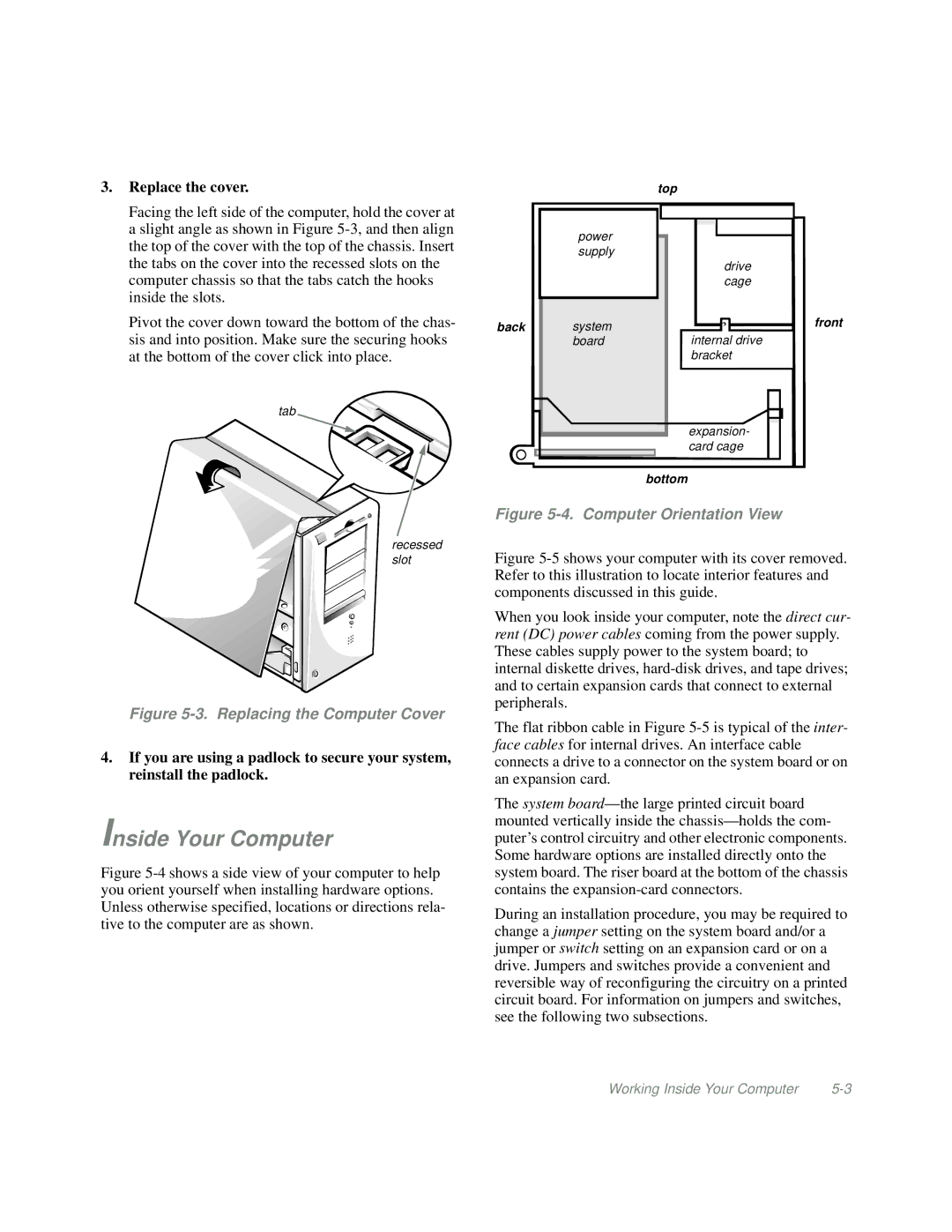
3. Replace the cover. |
Facing the left side of the computer, hold the cover at |
a slight angle as shown in Figure |
top
the top of the cover with the top of the chassis. Insert |
the tabs on the cover into the recessed slots on the |
computer chassis so that the tabs catch the hooks |
inside the slots. |
Pivot the cover down toward the bottom of the chas- |
sis and into position. Make sure the securing hooks |
at the bottom of the cover click into place. |
tab
power supply
back system board
drive cage
front
internal drive bracket
recessed slot
Figure 5-3. Replacing the Computer Cover
4.If you are using a padlock to secure your system, reinstall the padlock.
Inside Your Computer
Figure 5-4 shows a side view of your computer to help you orient yourself when installing hardware options. Unless otherwise specified, locations or directions rela- tive to the computer are as shown.
expansion- card cage
bottom
Figure 5-4. Computer Orientation View
Figure 5-5 shows your computer with its cover removed. Refer to this illustration to locate interior features and components discussed in this guide.
When you look inside your computer, note the direct cur- rent (DC) power cables coming from the power supply. These cables supply power to the system board; to internal diskette drives, hard-disk drives, and tape drives; and to certain expansion cards that connect to external peripherals.
The flat ribbon cable in Figure 5-5 is typical of the inter- face cables for internal drives. An interface cable connects a drive to a connector on the system board or on an expansion card.
The system board—the large printed circuit board mounted vertically inside the chassis—holds the com- puter’s control circuitry and other electronic components. Some hardware options are installed directly onto the system board. The riser board at the bottom of the chassis contains the expansion-card connectors.
During an installation procedure, you may be required to change a jumper setting on the system board and/or a jumper or switch setting on an expansion card or on a drive. Jumpers and switches provide a convenient and reversible way of reconfiguring the circuitry on a printed circuit board. For information on jumpers and switches, see the following two subsections.
Working Inside Your Computer |
